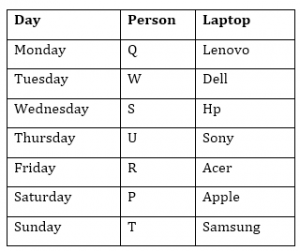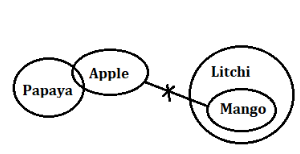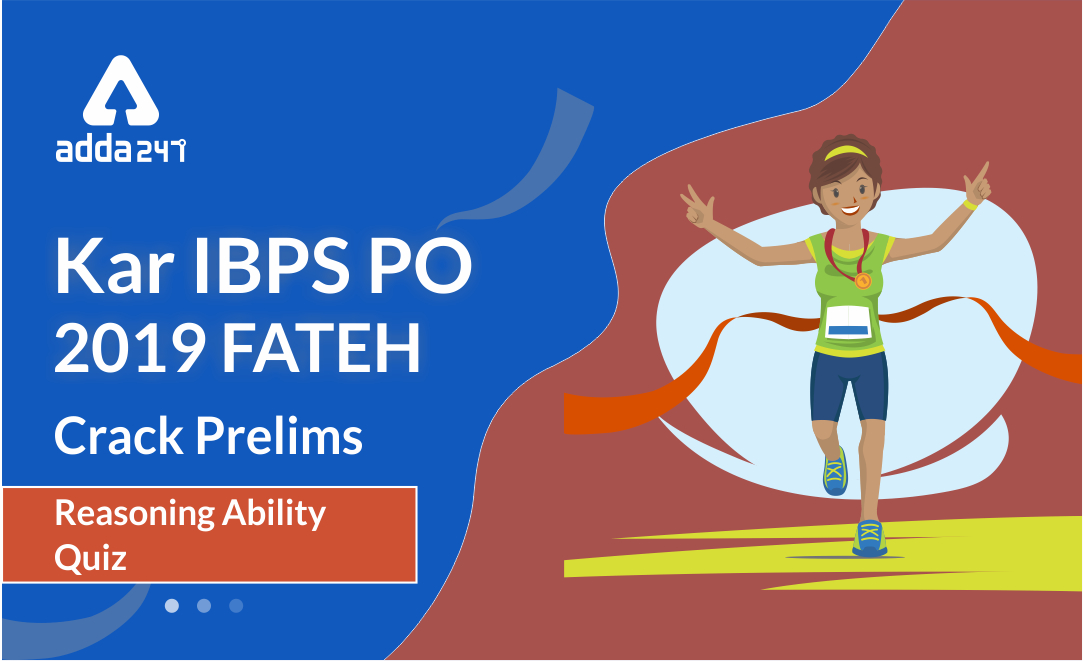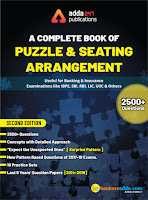The reasoning being the scoring part can enhance your performance as a whole. All you need to do is clear your basics and be aware of the syllabus of the particular exam you are preparing for. Study Notes for the topics like Puzzles, Coding-decoding, sitting arrangement, blood relations, and the list is long is provided on Adda247, so that you can make the preparation time fun by cracking the logic that runs the engine of a particular topic. Giving mocks and Quizzes on a regular basis will help you to decode the strategy. Also, the Study Plans go hand in hand with the exam preparations that will take place in the upcoming months. Like the IBPS PO Prelims are scheduled in the month of October and we already rolled the study plan ‘Kar IBPS PO 2019 FATAH’ for your aid. Under the same plan, here is the Quiz for Reasoning, to make sure that you don’t skip any important topic as well as be prepared to face any type of questions in the prelims. IBPS PO Reasoning Quiz of 22nd September 2019 covers Miscellaneous Topic.
Directions (1-5): Study the information carefully and answer the questions given below:
Seven persons P, Q, R, S, T, U, W bought different laptop on different days of the week starting from Monday. The laptop brands are Lenovo, Dell, Hp, Sony, Acer, Apple and Samsung but not necessarily in the same order.
R bought laptop on Friday. Two persons bought between R and W. No one bought laptop between W and the one who bought Hp. Three days are between the ones who bought Hp and Samsung. The one who bought Sony bought just before the one who bought Acer but after W. T bought just after P, who bought from Apple. Two persons bought between Q and U, who did not buy Lenovo. The one who bought Lenovo laptop bought just before the one who bought Dell laptop. Neither Lenovo nor Dell laptop was bought on Wednesday.
Q1. Who among the following person bought laptop on Tuesday?
(a) R
(b) Q
(c) S
(d) W
(e) None of these
Q2. Who among the following person bought laptop just before the one who bought Apple?
(a) P
(b) R
(c) T
(d) Q
(e) None of these
Q3. How many persons bought laptop between W and Q?
(a) Two
(b) Four
(c) One
(d) Three
(e) None
Q4. Four of the following five belong to a group in a certain way, find which of the one does not belong to that group?
(a) Q-Hp
(b) W-Sony
(c) U-Apple
(d) T-Sony
(e) P-Sony
Q5. Which of the following laptop bought by R?
(a) Acer
(b) Apple
(c) Dell
(d) Lenovo
(e) None of these
Solutions (1-5):
S1.Ans(d)
S2.Ans(b)
S3.Ans(e)
S4.Ans(d)
S5.Ans(a)
Directions (6-8): Read the given information carefully and answer the given questions.
Six boxes M, N, O, P, Q, and R are placed horizontally in a room, each box is of different weight. Weight of box R is a perfect cube of a number. Box M is heavier than O but lighter than R. Only one box is lighter than N. P is heavier than Q and its weight is 54 kg. O is not the lightest box. Weight of third lightest box is 30 kg. Not more than three boxes are lighter than M.
Q6. Which of the following box is lightest?
(a) Box O
(b) Box M
(c) Box Q
(d) Box R
(e) None of These
Q7. What can be the possible weight of box R?
(a) 27 Kg
(b) 8 Kg
(c) 64 Kg
(d) 55 kg
(e) None of these
Q8. Which of the following is the second heaviest box?
(a) Box O
(b) Box P
(c) Box M
(d) Box Q
(e) Box R
Solutions (6-8):
S6. Ans.(c)
S7. Ans.(c)
S8. Ans.(b)
Directions (9-10): In these questions, relationship between different elements is shown in the statements. These statements are followed by two conclusions.
Mark answer as
(a) If only conclusion I follows.
(b) If only conclusion II follows.
(c) If either conclusion I or II follows.
(d) If neither conclusion I nor II follows.
(e) If both conclusions I and II follow.
Q9. Statements: P ≤ M > H > E > A, M ≤ C < N, E < Q
Conclusions: I. H < N II. P > A
S9. Ans.(a)
Sol. I. H < N (True) II. P > A(False)
Q10. Statements: O ≥ M > F < A > B=N
Conclusions: I. O < F II. N =F
S10. Ans.(d)
Sol. I. O < F (False) II. N =F (False)
Directions (11-13): Study the following information carefully and answer the questions.
In a certain code language,
‘happy joy life extra’ is written as ‘xi me bu oe’,
‘sad live joy time’ is written as ‘bu ru qi he’,
‘extra live was fun’ is written as ‘ae su qi oe’,
‘dear sad try life’ is written as ‘pe he ce xi’,
‘was dear fun’ is written as ‘ae ce su’.
Q11. What is the code for ‘life’?
(a) me
(b) su
(c) qi
(d) xi
(e) None of these
Q12. Which of the following is the code for ‘try extra happy’?
(a) me oe pe
(b) su qi ce
(c) oe he pe
(d) me ce he
(e) None of these
Q13. What is the code for ‘time’?
(a) su
(b) bu
(c) ru
(d) Can’t be determined
(e) pe
Solutions (11-13):

S11. Ans(d)
S12. Ans(a)
S13. Ans(c)
Direction (14-15): In each of the questions below are given some statements followed by two conclusions. You have to take the given statements to be true even if they seem to be at variance with commonly known facts. Read all the conclusions and then decide which of the given conclusions logically follows from the given statements disregarding commonly known facts.
(a) If only conclusion I follows.
(b) If only conclusion II follows.
(c) If either conclusion I or II follows.
(d) If neither conclusion I nor II follows.
(e) If both conclusions I and II follow.
Q14. Statements:
Some apple are Papaya
No apple is Mango
All Mango is litchi
Conclusion:
I: Some papaya are not Mango
II: Some litchi are mango
S14. Ans(e)
Q15. Statements:
All Box are Bottle
All Bottle are cards
Some cards are mobile
Conclusion:
I: Some mobile are Bottle
II: All cards are bottle
S15.Ans(d)






 GA Capsule for SBI Clerk Mains 2025, Dow...
GA Capsule for SBI Clerk Mains 2025, Dow...
 The Hindu Review October 2022: Download ...
The Hindu Review October 2022: Download ...
 Global Energy Independence Day 2025, His...
Global Energy Independence Day 2025, His...


